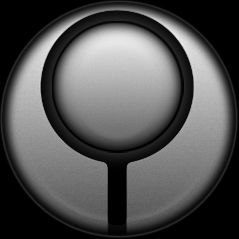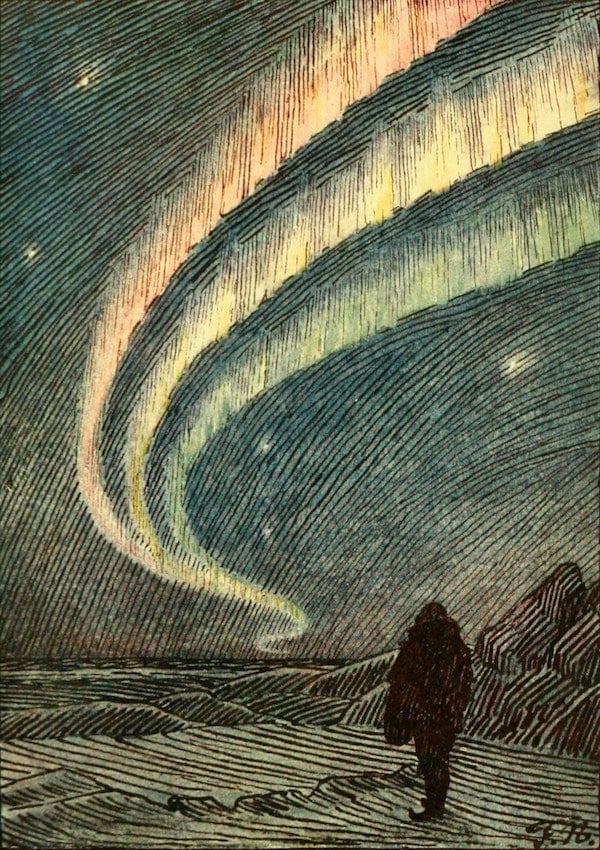We do? I have one. Know lots of people that have them. They sell them at Walmart for like 20 bucks.
I think certain regions of the US do have them and others do not at all.
For example, where I am at, I have only met one other person in real life that has one. But I do hear about a lot of my friends on the east coast having them. Dunno.
I’m east cost as well. So you might be on to something there.
I have one, but it only gets used a few of times a month. Usually by my wife when she just wants to make a small amount of coffee in the French press, or to boil water for instant foods. If you don’t really drink tea, they aren’t that useful for the amount of counter space they take up, and I can see why they aren’t as common here as they are in the UK.
We…do.
I have an induction Cook top just seems to be a waste.
I switched to induction and could not be happier. Love that thing. So much power, instant temp control like gas, low fire risk. I recommend induction to everyone.
I…what? I do, most of my friends do. They’re amazing.
120V vs 240V.
One has much more power available to achieve the same in a different time.
For example: I can easily boil 0.5L to 100°C of water in about 2-3min.
And the kettle is rated for 2kW.Voltage is only half of the equation. It’s wattage that determines how fast a kettle can boil water, but the UK does generally have higher wattage kettles than the USA. Most are 1800 here in the us, while they can be up to 3000 in the UK.
That’s exactly the point. Home connections are limited to a specific amperage (15 or 16) pretty much all across the world - certainly not beyond that anywhere. Voltage remains the only difference: 120 vs 240. With 120V at 15A you can only go up to 1800W which does take a long time to boil water.
Yes, you could have multiple phases to get to 240V in 120V countries to boil water faster but these would be special outlets and not meant for a kettle that you could buy from a Walmart.
actually that the why they are slower. most plug in devices in the usa are limited to 1.5 Kw. weather you used a 120v or 240v current it would just change how many amps it draws
2 kW @ 120 V is 16.7 A, which exceeds the 15 A limit on most household wiring in North America. To be able to achieve that you’d need to get a 20 A rated circuit installed by an electrician which means pulling out and replacing the wiring with a heavier gauge.
The advantage of 240 V rating in the UK is that you can draw more power with less current, so you don’t need the wiring to be so heavy for a high power appliance like a kettle.
yes. a 1.5 kw heater at 120 and a 1.5 kw heater on 240v would draw different amps but they would heat water at the same rate.
It was mentioned above that British kettles are 2 kW, not 1.5.
Well yeah.
But if both are rated for 6 or 8 Amps and can only supply 240 or 120V, you are bound to that.
Thus the volts are important as well.Something rated for so few wouldn’t be a good heater. At 1.5 kw that typical cut off for small devices in USA. You draw 12 amp. Plug it into a larger 240 vlot circuit and it draws amps but you still only get 1.5 kw of heating. Same time to boil water
That’s very true. With that said, I still find 110v kettles to be pretty fast for my needs. Especially if just making a single cup.
Too much clutter on my counters already. I can just leave the kettle on the oven.
I do. I have a nice temperature control pouring kettle. But I imagine that unless a person is into tea or a coffee enthusiast, most Americans are probably fine with a drip coffee machine and a microwave is fairly fast at boiling a mug too.
I do. And my kettle boils water faster than the electric stove.
So when I boil larger quantities of water I prefer to boil ~2/3 in the kettle and 1/3 on the stove with a lid on for max speed; my time rarely feels more wasted than when I’m waiting for water to boil.
I also use the kettle for hot drinks, of course. I’ve kept one since I lived in the UK.
I do. So convenient and low maintenance.
Some do, but because of the prevalence of automatic coffee machines and microwaves there isn’t as much of a need outside specialty coffee drinkers.
The argument about speed and convenience doesn’t work in the US because of the outlet voltage as well. The 110-120v outlets don’t provide the same level of power to kettles so they can’t heat up as quickly. If you have a microwave it’s just as fast or faster.
I’m in US. It takes roughly 2.5 minutes to reach 200F (coffee), and roughly 3 minutes to reach 213F (tea) and I’m talking 1 liter of water.
Also, good luck fitting 1 liter in most microwaves.
He addresses this some. 120v is still a lot faster than boiling water on the stove. Coffee makers are significant, but boiling water in a microwave is generally a bad idea, given the risk of superheating (not that people don’t do it.)
I have never once (unintentionally) superheated water in a microwave, and I’ve been using them since about 1980 (and God knows we were idiots with them back then).
It just doesn’t happen - there are too many imperfections in our containers, and too many minerals for it to happen much.
I’ve experimented many times, and the reality is you have to work at superheating water in a microwave.
For me, it’s taken things like a brand new Pyrex measuring cup (glass), and filtered water. I can do it with other stuff, but I’ve had to boil/cool it multiple times, something that isn’t really going to happen.
He goes into it in another video on the channel. Almost everyone I know uses a microwave for water.
Huh. I have. Didn’t know what it was, but heated the water, dropped in a spoon and it boiled over aggressively even though it didn’t look like it was boiling.
We do use a kettle, this happened at work - the microwave there was a lot stronger than mine, and I couldn’t get the water to look like it was boiling.
Same here, happened when I was young. Thankfully I wasn’t holding it in my hand, it was on the counter. I didn’t get burned
Voltage isn’t equal to the level of power though, a 110v can provide the same power as 240v. I think tea drinking just isn’t as popular in the US.
It’s not, but you need over twice the current to supply the same power, and since many safety measures and physical constraints limit the current, it effectively means the power limit is more strict.
This is assuming the same cables and breakers etc being used for both voltage ratings. I know there are specific wiring and connection systems for high amperage stuff in 110v places (probably for some 220-240v places too, but I’m in a place with notoriously bad electrical everything, fuck if I know)
Makes sense, I think you’re right and that the wattage still ends up being lower overall in the US.
The thing we use hot water for the most is coffee, which has its own device. For the few times we would need it for something else we either use the stove top kettle we inherited from grandma or the microwave.
Having said that, it’s not like electric kettles don’t exist here. They seem to be becoming more popular.
I bought an electric kettle as soon as I left home. I had one in college. I never had a coffee maker though. I’m happy with instant coffee.
Three reasons I can think of.
-
Americans don’t drink much tea. And soo…
-
Not many stores carry electric kettles.
-
Microwave tea.
yeah most homes in the usa have a coffee maker, microwave but no need for a kettle
deleted by creator
Uhhhhhh did you watch the video?
He goes to great lengths to point out that it isn’t an efficiency problem, and despite US residential standard outlets being 120VAC dedicated electric kettles are still the fastest way to boil water given other appliances (though induction cooktops are closing the gap).
The biggest reason dedicated electric kettles are not popular in the US is because we’re either boiling water for cooking some meal (pot is already on the stove so why bother with another appliance) or we’re making coffee. And the vast majority of coffee makers over here have the exact same circuitry and heating elements as an electric kettle. It’s just not standalone
Why don’t Americans use electric kettles?
Serves me right, I guess. I went by the thumbnail, remembered him talking about the difference in efficiency due to different voltages and took the wrong information to heart. So, I was wrong :D
-
I use them all the time! Unfortunately though our power system uses 120v and not 240v so our kettles aren’t as effective here. Still, MUCH more effective than boiling on the gas or electric stovetop/range.
Ironically it was after I spent time in Europe for work in the early 2000s that I picked up on this and bought one for my house. Now with my family of four, we use them regularly.
Edit - also Technology Connections (my favorite nerd out YouTube channel) did a video on this.
And I’m an absolute bonehead for missing that this is the same video as OP posted. Please forgive me for being excited as an American that uses kettles!
Uhm your link points to the same video by Alec as the OPs link. Just saying :)
Ha, I totally missed that, thanks. I just got excited about the subject and didn’t watch the video.
Remember Brown is just Orange with context. (Which strangely now has a new context)
I’m curious since you guys still use 240V for washer, dryer, cooker, EV charger, etc. Could you legally install a 240V socket (with a different plug type) and use an appliance from a 240V country?
I get it would probably be overkill for a kettle alone but I’m curious why it’s only common for some things. Is it regulated, like do devices need a special approval to be allowed to run 240V in US?
It’s perfectly legal to install a 240v outlet. They’re most common for electric stoves and dryers, but you also see them for machine equipment in a garage or workshop, air conditioners, electric heaters. There’s no reason you couldn’t have one in a kitchen.
Finding an appliance to use it might be different. Not only would an appliance for another place be designed for different electrical system (eg 50Hz instead of 60 Hz) but there would be none of the typical certifications and it would have a different plug. Technically there’s nothing stopping you, but you’re probably past the threshold of plausible deniability.
That being said, it was tempting!
I’ve thought about doing this. In fact, if I ever own or build a house, I’ll be adding 240v plugs for exactly this reason. Something like a nema 6-15 or 6-20, with a GFCI breaker in the box to make it (presumably) legal.
the legality would depend on code and regardless of voltage we do have 60 htz not 50 htz. That would only matter if there was a clock in the device. You also need to make the wire in the wall can handle it. Fun fact a lot of cheap device with times use the electrical frequency to keep time. That could also lead to wearing down of some parts faster.
Nope, it generally is not a good idea to try that. It might possibly work, but European power typically runs at 50hz (50 cycles per second) and the US is designed at 60hz. This small difference can mean that a European device would operate more quickly than designed. This is especially an issue with devices that have internal timers or motors.
Also, we have different plugs in the US for our 240v appliances, which would mean an interesting plug adapter situation.
So it could possibly work, or it could break the thing, or start a fire. Generally not for the faint of heart and definitely should consult an electrician.
You’re right about the frequency for sure, most things with an AC motor for example wouldn’t handle it.
But a quick search shows people have done this for things like kettles without issue.
For an electric kettle, which is usually a simple resistive load, I’d feel safe plugging it into American 240V60Hz.
I have one, I make drip coffee. Used them on a trip to Australia and got one soon after.











